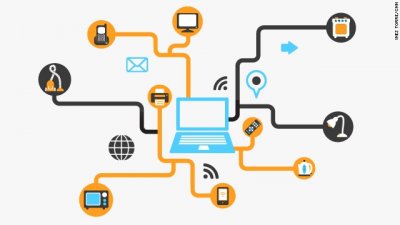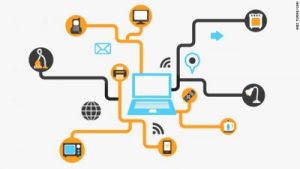
AWS IoT will dominate the Internet of Things market
 Public cloud providers are getting ready for the next round of the “cloud war”- winning the Internet of Things (IoI) business. Until now, working with devices, networks, security, and data collection for IoT applications has been difficult. But the big brother of cloud, Amazon Web Services, has added Amazon IoT, a new service companies can use to hook up with Internet-connected devices and build applications based on them.
Public cloud providers are getting ready for the next round of the “cloud war”- winning the Internet of Things (IoI) business. Until now, working with devices, networks, security, and data collection for IoT applications has been difficult. But the big brother of cloud, Amazon Web Services, has added Amazon IoT, a new service companies can use to hook up with Internet-connected devices and build applications based on them.
This new managed cloud service provides the infrastructure that allows connected cars, factory floors, aircraft engines, sensor grids to easily and securely interact with cloud services and with other devices, all at world-scale. The connection to the cloud is fast and lightweight (MQTT or REST), making it a great fit for devices that have limited memory, processing power, or battery life.
AWS IoT consists of the following components:
- Message broker—Provides a secure mechanism for things and IoT applications to publish and receive messages from each other. You can use the MQTT protocol to publish and subscribe. You can use the HTTP REST interface to publish.
- Rules engine—Provides message processing and integration with other AWS services. You can use a SQL-based language to select data from message payloads, process the data, and send the data to other services, such as Amazon S3, Amazon DynamoDB, and AWS Lambda. You can also use the message broker to republish messages to other subscribers.
- Thing Registry—Organizes the resources associated with each thing. You register your things and associate up to three custom attributes with each thing. You can also associate certificates and MQTT client IDs with each thing to improve your ability to manage and troubleshoot your things.
- Thing Shadows—Provides persistent representations of your things in the AWS cloud. You can publish updated state information to a thing shadow, and your thing can synchronize its state when it connects. Your things can also publish their current state to a thing shadow for use by applications or devices.
- Security and identity service—Provides shared responsibility for security in the AWS cloud. Your things must keep their credentials safe in order to send data securely to the message broker. The message broker and rules engine use AWS security features to send data securely to devices or other AWS services.
Getting started with AWS IoT
Getting started with AWS IoT is fairly straightforward. Simply head on over to Amazon and create an account. Once you’ve configured your Amazon account to include web services, look for the IoT section in the overall AWS landing page. It is wise to browse the “Getting Started” documentation, but the real interesting part is how you will deploy code on your embedded boards to interact with AWS.
Currently, three different approaches exist to writing code to connect your board to the Amazon cloud:
- A Linux-focused C software developer kit (SDK)
- A Javascript/nodejs SDK
- A specialized SDK for the Arduino Yún’s unique bridge architecture
AWS IoT will help Amazon establish its dominance in the IoT market, providing secure, bidirectional communication between Internet-connected things and the AWS cloud. This will enable users to collect telemetry data from multiple devices and store and analyze the data. Also, they will create applications that enable users to control these devices from their phones or tablets.
Photo source: businessinsider.com




